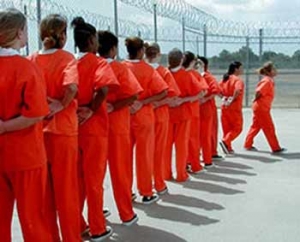Presented largely without comment, for those of you who haven’t seen it yet: elementary school kids slurring their way through Scarface.
As with all the important stories, TMZ has breaking news about it.
Presented largely without comment, for those of you who haven’t seen it yet: elementary school kids slurring their way through Scarface.
As with all the important stories, TMZ has breaking news about it.
 So it might have been rough on the kids (and my wife) that I was away last week in Buenos Aires. Knowing that I was out having a great time in the land of empanadas and Quilmes beer probably didn’t help much.
So it might have been rough on the kids (and my wife) that I was away last week in Buenos Aires. Knowing that I was out having a great time in the land of empanadas and Quilmes beer probably didn’t help much.
So I shopped well for everyone to let them know that I was, um, thinking of them. That included, as it always does on my trips overseas, a visit to local bookstores to look for good children’s books to bring back home.
This time I went to Yenny bookstore in the Alto Palermo shopping mall (I know, before you Buenos Aires snobs write in, that the Ateneo bookstore is much cooler). But see, Yenny had a big kid’s book section, and plenty of great titles to choose from. The only thing is that they were, by and large, the exact same books I’ve found in bookstores in Berlin, Madrid, Istanbul–you name it, you’ll always have your Sendaks, your Carles, your Boyntons, and the rest of the small elite of American and European authors whose works you’ll find on every continent.
I don’t mind that great books are translated and sent around the world. And there’s something a little dizzying, in a good way, about the idea of the book I photographed up top (which I found in Yenny but didn’t buy): a Russian Tolstoy story illustrated and adapted for children by a couple of Koreans, on sale in Spanish in Buenos Aires. It’s the perfect example of what Jorge Drexler was singing about in his sparkly remake of “Disneylandia”.
My problem is that I travel quickly but want to remember deeply. I want something that is actually produced in the country I’m visiting, and, god forbid, that might actually say something about that country. That’s where the global kidlit industry can be a little depressing.
I did finally find, hidden in a corner, the book Cuero Negro, Vaca Blanca (Black Leather, White Cow), written by Pablo Bernasconi. I know, he’s got an Italian last name, but so does everyone in Argentina. The fact is that he is an Argentinian children’s book author who does very cool stories with great pastiche illustrations, and I found his book in Buenos Aires. Sure, I read later on his blog that the book had actually been published by Random House and translated into English and Korean a half-decade before it was released in Argentina. But still, it’s about cows, which are a national Argentine obsession (my other pickup was called Opuestoros, which has been translated as Oppbullsits, and may or may not be Argentinian, but should be just because it’s also cute and bovine). My four-year-old daughter is seriously into this book already, and I’m happier for it.
I know that Maurice Sendak is a world heritage and whatnot, but I do feel for lesser-known authors around the world who would like to be able to make a living writing books for the kids of their countries. Books that can smartly reflect their national obsessions and values. It just seems more difficult than ever to actually pull that off.
 It’s always pretty easy to make fun of the Times’ “Modern Love” column, but I have to say I really liked Sunday’s edition, in which a Brooklyn guy—Larry Smith—details the weekly visits he makes to visit his fiancée at the Connecticut prison where she’s doing time for money-laundering. Along the way he meets other husbands and fathers doing the same thing:
It’s always pretty easy to make fun of the Times’ “Modern Love” column, but I have to say I really liked Sunday’s edition, in which a Brooklyn guy—Larry Smith—details the weekly visits he makes to visit his fiancée at the Connecticut prison where she’s doing time for money-laundering. Along the way he meets other husbands and fathers doing the same thing:
Like at a men’s room at Giants Stadium, where the hedge-fund manager sidles up next to the pipe fitter, we were drawn together for a common cause, feeling exposed, and maybe a little sheepish, but fiercely loyal and basically rooting for the same team.
Anyway, give it a read.

Nathan’s fine post detailing the scourge of anti-male discriminatory practices in our public school system (that’s a fair characterization, no?) made me think of some of the experiences I have been having with my son.
Now, before I get too far into this, I want to make it clear–I don’t subscribe to a Real Boys view of the world. No virulent feminist forces marshaling to crush the spirit of our little men haunt my imagination. And as someone who can barely change a light bulb, the conventional male prerogatives can go threatened without any great weeping on my part. JP is not now, nor do I sense that he ever will be, a victim of anti-boy bias.
That said, I do notice a tendency to diagnose what seems to be not-abnormal bouts of rambunctious behavior on his part.
At the last parent-teacher conference, JP’s truly wonderful (seriously) pre-school teacher, whom JP adores, basically gave me a sit-down on JP’s inability to sit still, focus on anything other than toys, and essentially implied that he–along with several other male cronies–were an obstacle to the overall educational environment. A lovely child, she said, but just unable to control his impulses physically, particularly in a high-stimulus, group environment. She recommended occupational therapy.
Again, I like this woman and so does JP. But occupational therapy because the kid has ants in his pants? It seemed a rather heavy-handed suggestion, I thought, and I told her so. She replied that she hadn’t intended it that way, and that these days in fact, lots of children (the examples she gave me were all boys) go to occupational therapy. If my insurance didn’t cover it, there was actually a free program through the Board of Education. That program, it turned out, was Pre-School Special Education… because JP couldn’t sit still.
I didn’t know what to make of it. At that age, occupational therapy is mostly just directed play. No harm in that, and if the city wants to pay for it, well, hey, it’s my tax money, right? I feared the slippery slope, however. Now JP couldn’t sit still so he should get therapy; next, he’s having trouble being quiet in class and he won’t wait his turn in the cafeteria, and the suggestion is Ritalin; and so on, until I become one of those over-medicating parents people always sneer at and say man, just anyone can breed, huh?
I don’t have a shred of evidence about this, mind you, but again, this largely seems directed at male behavior that not so long ago wouldn’t even have been noteworthy. Do I think, as Nathan argued, that male teachers might help prevent this form of tracking? I don’t really know. I tend to think dearth of male teachers can be attributed more to the male notion that its women’s work than anything else. If we want more male teachers then more men must want to teach. Besides, I’m less focused on that level of solution than I am on advocating for what I think is best for my son.
So, no therapy for JP. If he can’t sit still in “circle time,” well, then maybe he should go sit in the corner until he’s ready to play nice. I’ll save the therapy for me.